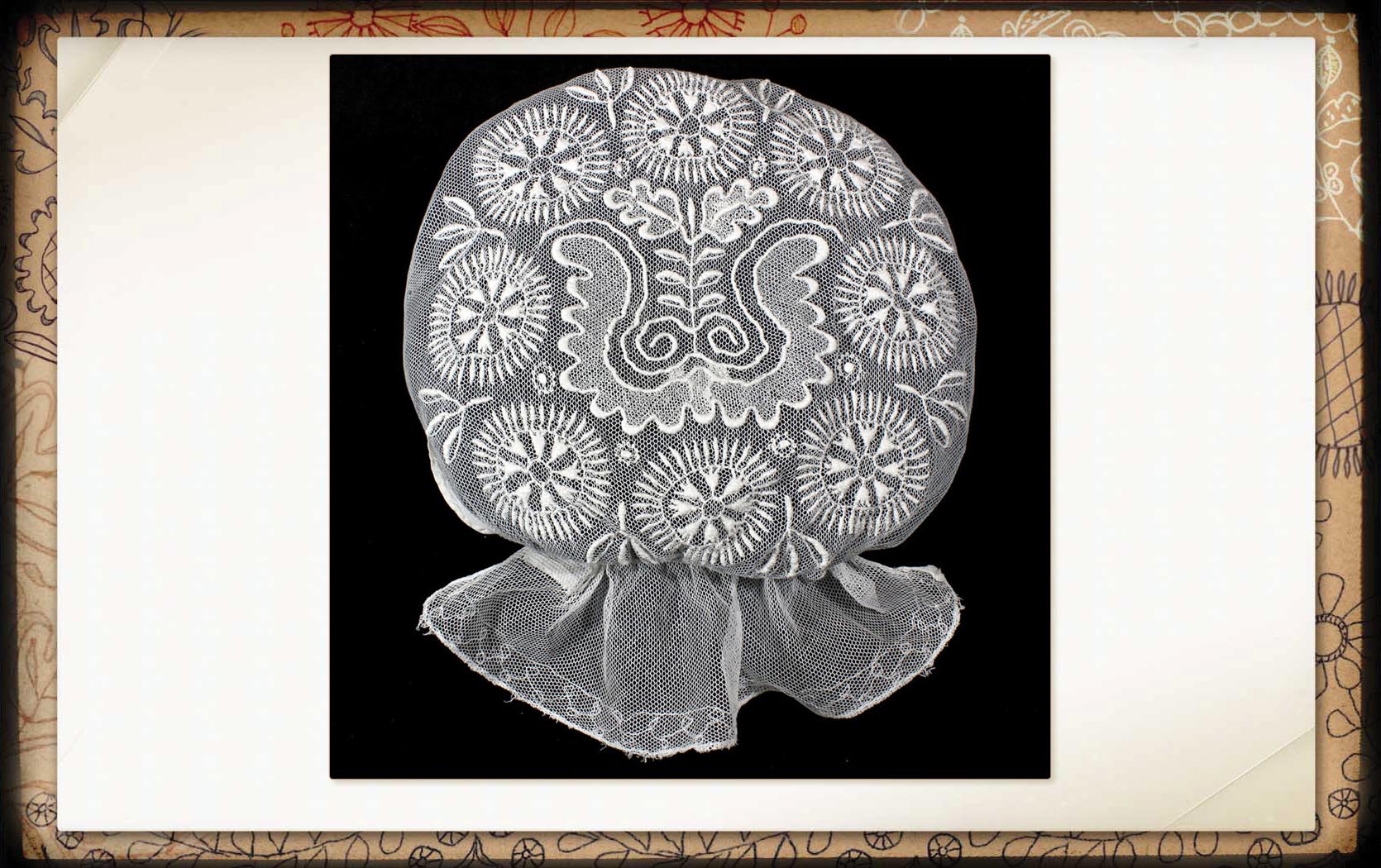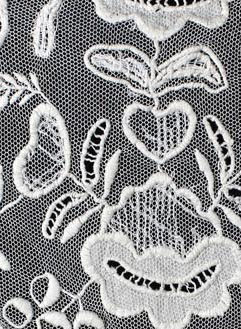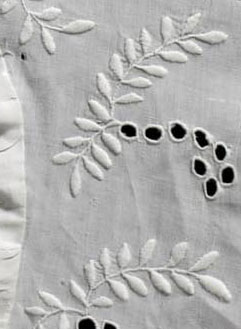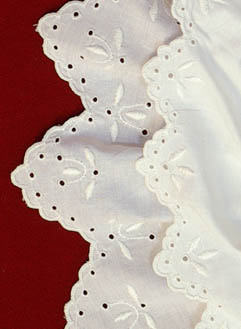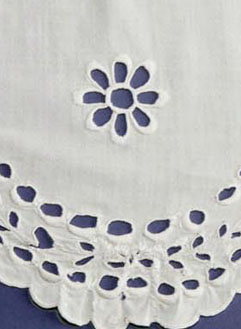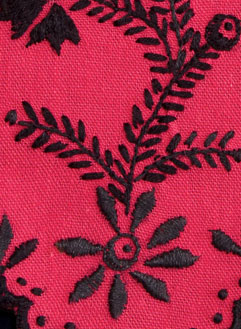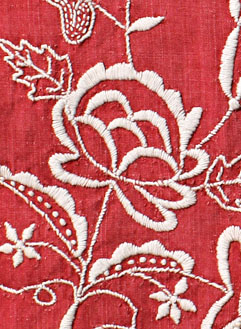
The origins of Kuyavian ornamentation go back to professional embroidery. In the 19th century, monasteries and courts organised workshops where poor countrywomen learned embroidery. Thus, experts were educated and they were then hired to decorate underwear and bed linen prepared as dowry for wealthy marriageable ladies. Thanks to those experts embroidery spread onto the Kuyavian folk costume. In addition to satisfying court orders, they sold their products at fairs and filled individual orders placed by Kuyavians even from distant villages.
Embroidered elements of outfit
Decorations on the elements of woman’s outfit started to appear in the second half of the 19th century. The decorations included white embroidery, which was applied freely onto the material (cambric, muslin, tulle and canvas) produced with short stitches and known as white sewing. Black thread was applied only in red petticoats, known as hellish petticoats. The first patterns appeared on bonnets. Then embroidery appeared on canvas and cambric collars and ruffs as well as petticoats and aprons. Cotton or satin were mainly used for embroidery. The most common stitches included string stitch, satin bedding, roller stitch, stitch after the single or multiple needle, knitted stitch and round stitch. In addition, appliqués (tulle or canvas) as well as spun stitch technique and threading were used.

